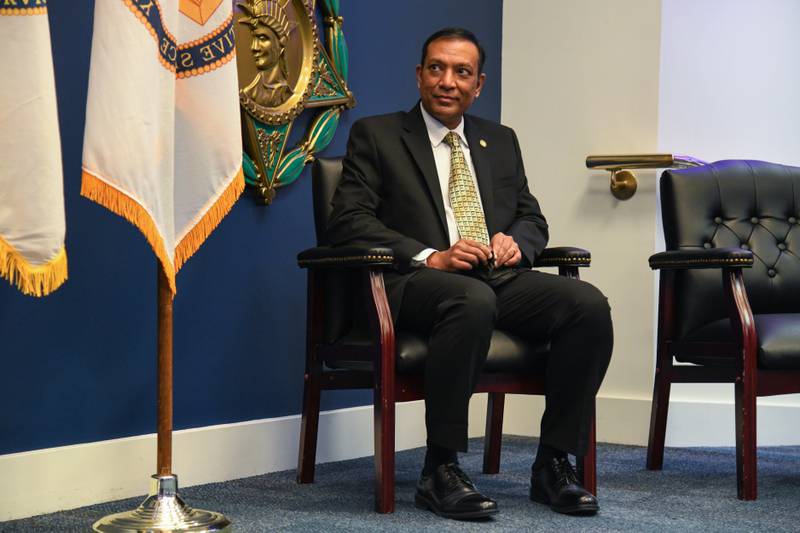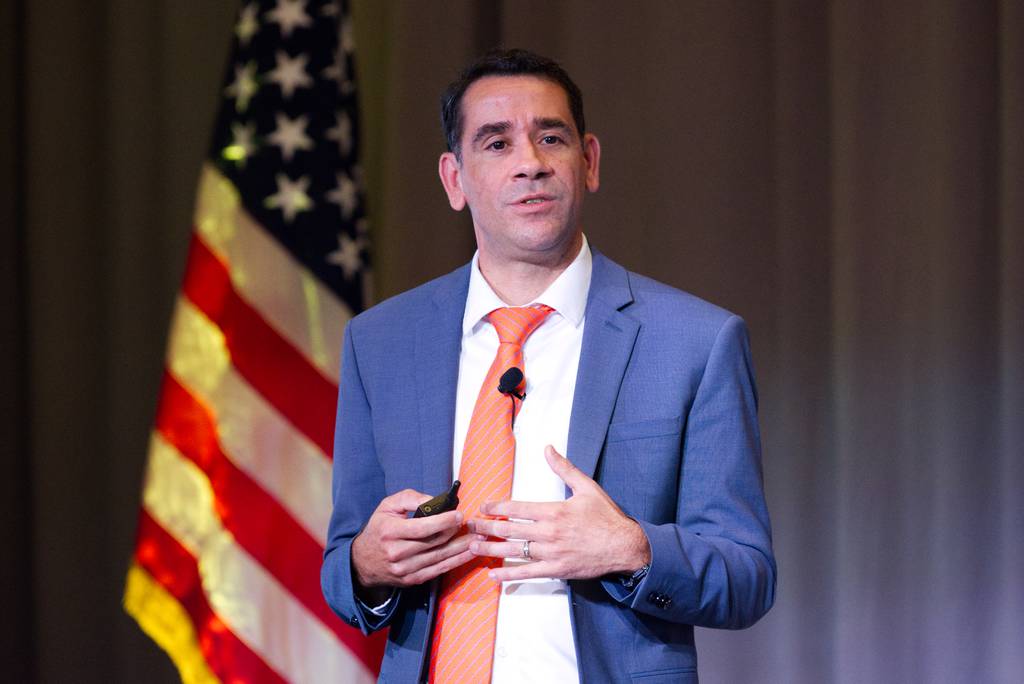AUGUSTA, Ga. — Leonel Garciga, the U.S. Army’s new chief information officer, is known as a “bureaucracy hacker” in some circles.
With such a moniker, indicating his dislike for red tape, come expectations. And one month into the role, he indicated he’s ready to sidestep outdated or unwieldy policy for much-needed modernization.
“We’ve got to move fast, right? We have to be able to adapt. We cannot be stuck with the bureaucracy,” Garciga said at the AFCEA TechNet Augusta conference in Georgia on Aug. 16. “I live for people telling me why I can’t do something that’s written down, or that I’m already allowed to do, because of an interpretation.”
Garciga was named CIO in July. He succeeds Raj Iyer, who after nearly three years atop the Army information-technology behemoth rejoined private industry.
Garciga previously served as the top tech officer for Army intelligence and spent years at the Department of Defense’s improvised explosive device research arm. He is also a Navy veteran.
RELATED

“We’ve got a lot — a lot — of folks in critical positions right now that are all about hacking that bureaucracy and not allowing, in some cases, decades of practice remain that don’t need to,” Garciga said at the conference. “As an intel guy, when I was at acquisition and sustainment, when I was at DoD CIO, I never ran into a real thing where the policy said I couldn’t do it.”
The Defense Department has long been chided for its slow-to-adapt nature. Garciga said he plans to slash bureaucratic bloat and get “a lot better” at delivering on promises already made.
The Army, the military’s largest service, is pushing what it calls digital transformation: the phasing in of new technologies, connectivity and online practices. The service in fiscal 2023 sought $16.6 billion in cyber and IT funding, or roughly 10% of the overall budget blueprint.
“Cloud? Let’s run as fast as we can, let’s learn as fast as we can. Defensive cyber? Let’s move as fast as we can, learn as fast as we can,” he said. “We’re in, kind of, the next stage. A little bit of the foundation is in place, and now we’ve got to pick up all the pieces.”
Colin Demarest was a reporter at C4ISRNET, where he covered military networks, cyber and IT. Colin had previously covered the Department of Energy and its National Nuclear Security Administration — namely Cold War cleanup and nuclear weapons development — for a daily newspaper in South Carolina. Colin is also an award-winning photographer.








